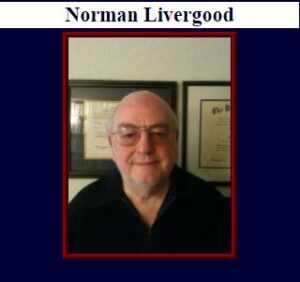“The teachings of Jesus and the way in which he practiced it belonged to the whole realm of middle Eastern mythology. In which at some point beings fell out of the pure Light dimension into this plane and took on the role of darkness. Truth was the realm of Light and followers of Jesus would return to the realm of Light. Jesus was from the realm of Light and and that the realm of Light andTruth. The earth was a fallen domain, ultimately to be the place perhaps of a great war between evil and good forces, the force of Light and the forces of darkness, and earth was a place that was ultimately just to be dissolved and judged. And all of those who had become sympathetic with the Truth of Light would be drawn up into the subtle Light world. And basically that’s the mythology in which Jesus’ work appeared and in which the Christian religion appears, in which all of the Semitic religions basically appear. And in that tradition there is a distinction, an absolute distinction between the Divine and all beings, all souls. And souls can be sympathetic with darkness or with Light. And depending on which you sympathize with, you enjoy or suffer a destiny in the future based upon the acts of God.“
more…
Adi Da Samraj (Bubba Free John) – July 30,1975
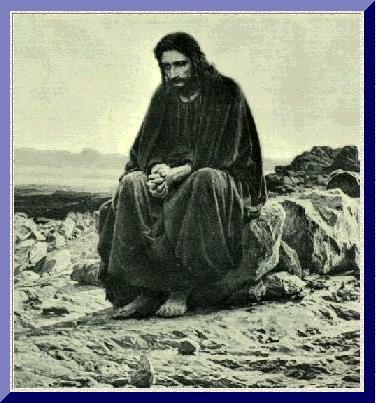
Esoteric Christianity
“Believe me, a man cannot
even see the kingdom of God
without being born again.” 1
By
About 25-30 C.E. a mystical teacher named Jesus began to tell people about a spiritual realm in which the person who would be leader must be a servant of all. He spoke of a definite re-birth into a Higher Consciousness.
Jesus indicated that his message consisted of a public (exoteric) message for all the people and an advanced (esoteric) teaching reserved for initiates.
Mark 4: “Then when they were by themselves, his close followers and the twelve asked about the parables, and he told them: ‘The secret of the kingdom of God has been given to you. But to those who do not know the secret, everything remains in parables, so that, seeing they may see, and not perceive; and hearing they may hear, and not understand lest haply they should turn again, and it should be forgiven them.'”
“So he taught them his message with many parables such as their minds could take in. He did not speak to them at all without using parables, although in private he explained everything to his disciples.” [Phillips translation]
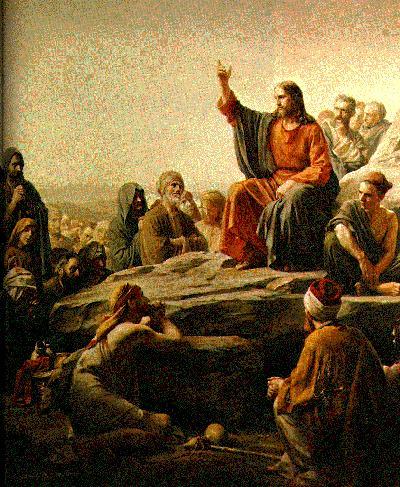 Matthew 13: “The man who has ears to hear should use them”
Matthew 13: “The man who has ears to hear should use them”
“At this the disciples approached him and asked, ‘Why do you talk to them in parables?
“‘Because you have been given the chance to understand the secrets of the kingdom of Heaven,’ replied Jesus, ‘but they have not. For when a man has something, more is given to him till he has plenty. But if he has nothing even his nothing will be taken away from him. This is why I speak to them in these parables; because they go through life with their eyes open, but see nothing, and with their ears open, but understand nothing of what they hear.”‘ [Phillips translation]
1 Corinthians 2:6-15: “But we speak the wisdom of God in a mystery, even the hidden wisdom, which God ordained before the world unto our glory: which none of the princes of this world knew.
“We interpret what is spiritual in spiritual language. The unspiritual man rejects these truths of the Spirit of God; to him they are ‘sheer folly,’ he cannot understand them. And the reason is, that they must be read with the spiritual eye. The spiritual man, again, can read the meaning of everything; and yet no one can read what he is.”
Clement of Alexandria (150-220 C.E.)
“The Lord . . . allowed us to communicate of those divine Mysteries, and of that holy light, to those who are able to receive them. He did not certainly disclose to the many what did not belong to the many; but to the few to whom He knew that they belonged, who were capable of receiving and being moulded according to them. But secret things are entrusted to speech, not to writing, as is the case with God.”
“Many things, I well know, have escaped us, through length of time, that have dropped away unwritten.”
“Even now I fear, as it is said, ‘to cast the pearls before swine, lest they tread them underfoot, and turn and rend us.’ For it is difficult to exhibit the really pure and transparent words respecting the true Light to swinish and untrained hearers.”
Movement Away from the Authentic Teachings of Jesus
After Jesus’ death, those who understood the genuine teaching of Jesus recognized him as one of a long line of savants within the Perennial Tradition 2–such as Hermes and Plato–who initiated chosen disciples into a mystical rebirth of the soul into a Higher Consciousness.
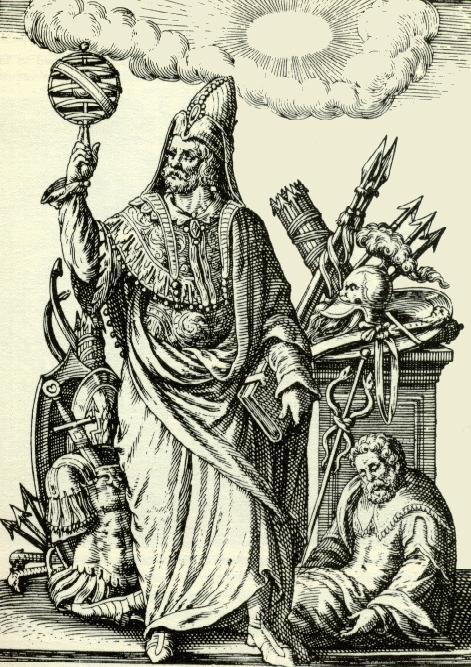 Each Perennialist teacher interpreted the fundamental message about spiritual regeneration in terms of the needs of the people during their age. So we have the Hermetic teachings during the time of Hermes Trismegistus, the Mystery teachings during the days of Egypt and Greece, Platonism during the time of Plato, Neo-Platonism during the time of Plotinus–each an embodiment of the Perennial Tradition. The genuine, hidden teachings of Jesus–Esoteric Christianity–is one of those embodiments.
Each Perennialist teacher interpreted the fundamental message about spiritual regeneration in terms of the needs of the people during their age. So we have the Hermetic teachings during the time of Hermes Trismegistus, the Mystery teachings during the days of Egypt and Greece, Platonism during the time of Plato, Neo-Platonism during the time of Plotinus–each an embodiment of the Perennial Tradition. The genuine, hidden teachings of Jesus–Esoteric Christianity–is one of those embodiments.
Early Christianity developed in the crowded, poverty-stricken cities of Asia Minor, finding its adherents among the working class and slaves. Throughout the Roman empire, there was intense social ferment . In the century before Jesus, a widespread revolt of slaves led by Spartacus conquered most of southern Italy and threatened the Roman Empire.
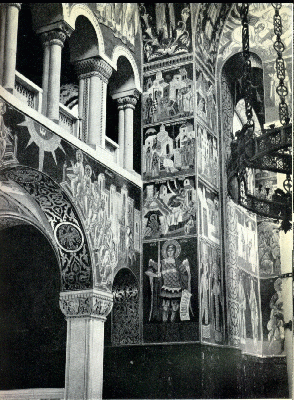 Within a short time, there came into being a new sacerdotal state-supported Church 3 which misrepresented Jesus as a god. Such genuine adepts as Paul, Clement of Alexandria, Marcion, Valentinus, and Origen, understood Jesus’ true teachings and did not view him as a deity but as a mystical teacher. Those who instructed initiates in the authentic teachings of Jesus found it necessary to go underground, because a tyrannous, bureaucratic “church” was taken over by the Roman Empire and deformed into a “state religion.”
Within a short time, there came into being a new sacerdotal state-supported Church 3 which misrepresented Jesus as a god. Such genuine adepts as Paul, Clement of Alexandria, Marcion, Valentinus, and Origen, understood Jesus’ true teachings and did not view him as a deity but as a mystical teacher. Those who instructed initiates in the authentic teachings of Jesus found it necessary to go underground, because a tyrannous, bureaucratic “church” was taken over by the Roman Empire and deformed into a “state religion.”
During this period, there developed a large number of writings which claimed to be authentic representations of Jesus’ life and teachings. In this morass of confusion, these varied interpretations of Jesus’ teachings vied for acceptance.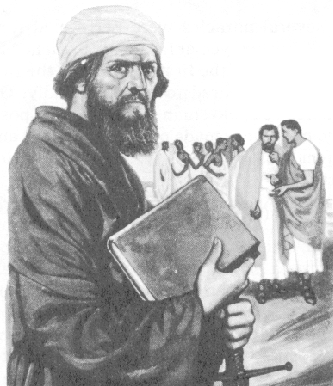 One of the persons who first wrote about Jesus was a man who had been an enemy of the church until he experienced a mystical conversion. Paul saw himself as an apostle (one sent on a mission), perhaps “the” apostle, of Jesus. He believed he had actually experienced Jesus in a mystical encounter during which he was commissioned to spread the “good news”–the gospel of Jesus’ teaching–presenting a conception of God as forgiving, loving, and wise.
One of the persons who first wrote about Jesus was a man who had been an enemy of the church until he experienced a mystical conversion. Paul saw himself as an apostle (one sent on a mission), perhaps “the” apostle, of Jesus. He believed he had actually experienced Jesus in a mystical encounter during which he was commissioned to spread the “good news”–the gospel of Jesus’ teaching–presenting a conception of God as forgiving, loving, and wise.
Paul was aghast when he learned that Peter and some of the other apostles of Jesus in Jerusalem and other cities were interpreting Jesus’s message as an extension of Judaism, using the Hebrew Old Testament as a major scripture.
William Kingsland. The Gnosis or Ancient Wisdom in the Christian Scriptures
Paul insisted that a person could become a Christian without submitting to circumcision or other Jewish religious laws and practices. Paul defined Christianity as the experience of re-birth in Jesus, a spiritual awakening of the same nature that he had gone through. Both Jesus and Paul made it clear that Christianity was decidedly not an extension of Judaism.
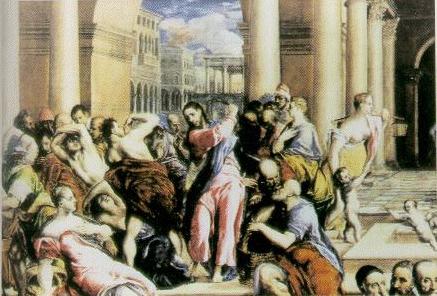
“Christ himself. . . confirms the Pauline gospel in general and in detail. Did he not break the law again and again in his life and through his teachings? Did he not declare war against the teachers of the law? Did he not call the sinners, while those teachers desired only righteous men as their pupils? Did he not declare the greatest prophet of the Old Testament God, John the Baptist, to be an uninformed man, one who had taken offense at him? . . .
“When he forbids the placing of a new patch on an old garment and the pouring of new wine into old wineskins, he thereby strictly forbids his people in any way to connect his preaching with that of the Old Testament. . .” 4

Jesus would not have taught that he was the Messiah promised in the Jewish scriptures. That concept of an anointed one, as Jesus pointed out, involved this person becoming an earthly king, a political ruler. This Christ concept was exclusively a Jewish idea. But the misguided Christian autocrats were trying to graft Jesus’ teachings onto Judaism, the creed of one small nation. To carry this out, the church leaders had adulterated and garbled the original sayings of Jesus, adding the phrase “in order that it might be fulfilled” to everything Jesus did, to “prove” that he was the Jewish Messiah-King.
The New Testament “was made in its present form largely in order that it might conform with the supposed prophecies in the Jewish Old Testament Scriptures concerning an earthly Messiah, as is well shown in the numerous statements ‘that the Scripture might be fulfilled,’ or ‘according to the Scriptures.'”
William Kingsland. The Gnosis or Ancient Wisdom
in the Christian Scriptures
The Christ Concept
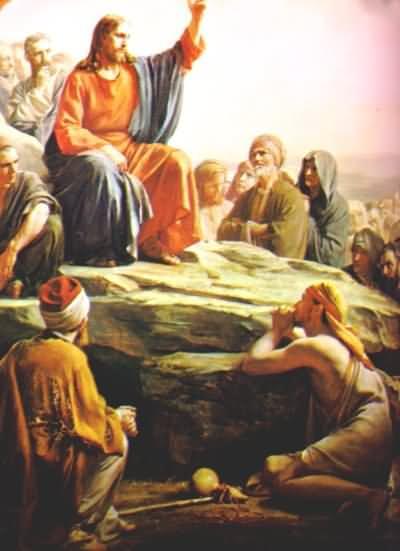
If Jesus used the Christ concept in reference to himself it would have been in an entirely new, non-Jewish manner, with different content and meaning. The koine Greek term Christos simply means “anointed one,” and Jesus would have considered himself anointed or commissioned to communicate a specific teaching.
Thus in the early church a number of factions had arisen, with Peter and some of the other original apostles preaching a Judaised, sacerdotal Christianity requiring no more than belief, while Paul insisted that Jesus’ teaching was about a spiritual rebirth such as he had himself experienced.
Both Jesus and Paul taught that religion is not mere belief in doctrines but practical knowledge (gnosis, gnosis) of the way to regain one’s birthright as a “Son of God” through a radical transformation process.
“We do not become Christs (Christos) because he was that. We shall never become it simply by believing that he was that, or that he did all that the Gospels record; or that he did something for us which washes away our sins and gives us a short cut to eternal bliss. No. We shall only achieve the same likeness when ‘that same mind’ (or ‘word’) which was also in Christ Jesus has been ‘brought to birth’ in us also, i.e. when we have realized that we, equally with him, are essentially divine in our deepest nature; that we are, equally with him, ‘sons’ of the same ‘Father,’ and are thus able to manifest as he did that divinity in our very humanity.”
in the Christian Scriptures
The original teaching of Jesus was thus passed on through Paul and those whom Paul and his immediate companions taught in the many cities they visited.
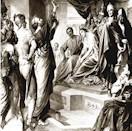
“The God that made the world and all things therein, he, being Lord of heaven and earth, dwelleth not in temples made with hands; neither is he served by men’s hands, as though he needed anything, seeing he himself giveth to all life, and breath, and all things; and he made of one every nation of men for to dwell on all the face of the earth, having determined their appointed seasons, and the bounds of their habitation; that they should seek God, if haply they might feel after him, and find him, though he is not far from each one of us; for in him we live, and move, and have our being; as certain even of your own poets have said.”
“The persecution of the Christians was regarded as a social necessity by the rulers of Rome; the spread of the doctrine nourished dangerous discontents and provided new and effective channels of organization for the lower classes. Pliny the Younger, who was governor of Bithynia in the early years of the second century, wrote to the emperor concerning the troublesome activity of Christians in forming collegia or gilds, and he told of torturing two maidservants in order to get information about these associations.

“As Christianity developed, it gained adherents among well-to-do craftsmen and merchants, especially in the cities of the eastern Mediterranean; economic interest made it imperative for these classes to oppose the corrupt and oppressive power of the empire. In joining the Christian movement, they could restrain its more radical tendencies, and utilize its organized strength as a defense against imperial restrictions. The disintegration of the imperial system forced Constantine to abandon Rome and move his capital to Byzantium in order to control the eastern area of trade. At the same time, he had to adopt Christianity, as the best means of maintaining his authority over the urban centers which were the key to the economic existence of the empire.
“The adoption of Christianity as a state religion required a fundamental change in its class character and ideology. But this was not an easy task. It could not be accomplished without a violent conflict between the patrician class which ruled the empire and the majority who took Christianity literally as a gospel of equality and brotherhood. By the time of Augustine, the conflict had reached a stage of crisis, which threatened to disrupt the empire.”
The Triumph of Pseudo-Christianity
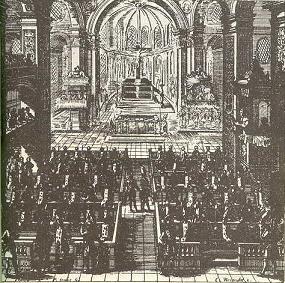 If you watch a TV history of Christianity or read a Protestant or Roman Catholic account of the early church, Christianity’s becoming the official religion of the Roman state during Constantine’s reign is considered a great victory. The only measure of success for these moderns is whether or not a tradition triumphed over all its competitors. Never mind what distorting of the original message had taken place or what atrocities the Church committed. If a particular religion came out on top, it’s to be considered the best.
If you watch a TV history of Christianity or read a Protestant or Roman Catholic account of the early church, Christianity’s becoming the official religion of the Roman state during Constantine’s reign is considered a great victory. The only measure of success for these moderns is whether or not a tradition triumphed over all its competitors. Never mind what distorting of the original message had taken place or what atrocities the Church committed. If a particular religion came out on top, it’s to be considered the best.
On the contrary, the formal religion that became known as the Holy Roman Church was and is nothing but a vast repository of false teachings and practices. At the present time, orthodox Christianity, in all its Catholic, Eastern Orthodox, and Protestant guises, is a horrible deformity of Jesus’s original teachings.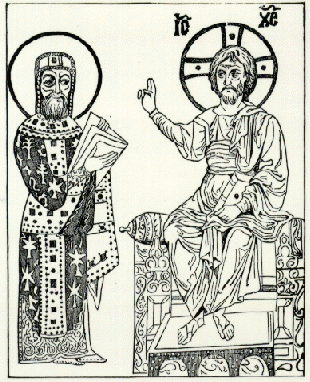
“The Emperor Constantine who, having become a convert to Christianity, soon made his new faith the official religion of the Roman Empire, which he ruled from ancient Byzantium, renamed Constantinople. And so, at about 320 A.D. the Church not only came to glorious power but was given a clearly God-sent opportunity to revenge itself on the descendants of those who had persecuted it for almost three hundred years. Unleashing a reign of terror on those pagans who stubbornly refused the new faith, Constantine and the Church waded deep in blood and apparently enjoyed the experience, for the lions enjoyed pagans as much as they had Christians and the crosses now carried different victims.”
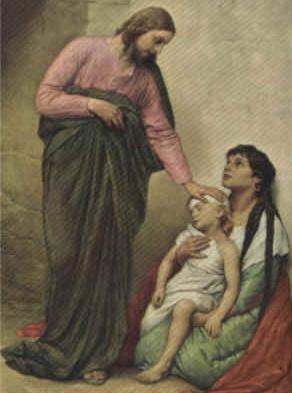 Whereas the people Jesus befriended were the poor and outcast of society, the bureaucratized “church” began to direct its attentions to the wealthy and politically powerful. Already by the end of the first century C.E., Christians in Rome included members of the Emperor’s household.
Whereas the people Jesus befriended were the poor and outcast of society, the bureaucratized “church” began to direct its attentions to the wealthy and politically powerful. Already by the end of the first century C.E., Christians in Rome included members of the Emperor’s household.
As Paul, Clement, Marcion, Valentinus, and Origen made clear, the essence of Jesus’s teaching was the esoteric initiation of a select number into the mysteries of the “new being.” Within a hundred years Jesus’s original teachings had been perverted into an ecclesiastical power system: the “triumph” of pseudo-Christianity.
“Christianity, which had been the religion of a community of equal brothers, without hierarchy or bureaucracy, became ‘the Church,’ the reflected image of the absolute monarchy of the Roman Empire.”
The counterfeit interpretation of Jesus’ teachings became the official, orthodox dogma and the congregations (those called together) became a monolithic “church,” a sacerdotal monstrosity supported by the corrupt Roman emperor Constantine.
Constantine had adopted Christianity merely to provide support for his conquest and rule, so he was furious that there were squabbling factions within his adopted faith.
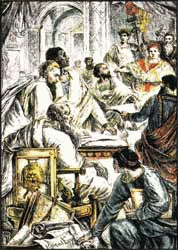 So, in 325 C.E. three hundred and twelve bishops were ordered by Emperor Constantine to work out a creed that would put a stop to theological bickering. The emperor himself, dressed in a purple gown and with a silver diadem, opened the council. The Council of Nicea made it clear that Christianity was to be clearly distinguished from the pagan Platonic heresy. All Christians were henceforth required to believe that Jesus Christ was of the same substance as God (in other words, a god) and only Christ could bring about humankind’s salvation through a person’s belief in his sacrifice for their sins.
So, in 325 C.E. three hundred and twelve bishops were ordered by Emperor Constantine to work out a creed that would put a stop to theological bickering. The emperor himself, dressed in a purple gown and with a silver diadem, opened the council. The Council of Nicea made it clear that Christianity was to be clearly distinguished from the pagan Platonic heresy. All Christians were henceforth required to believe that Jesus Christ was of the same substance as God (in other words, a god) and only Christ could bring about humankind’s salvation through a person’s belief in his sacrifice for their sins.
As the doctrinal orthodoxy decreed by such Councils as Nicea became the official ideology of the Romanized church, the genuine teachers of Jesus’ original message of transformation found it necessary to go underground. This hidden tradition is what we now call Esoteric Christianity.
“Catholicism has long been hostile to the notion of any spiritual power or illumination apart from what is conferred by its own rites. The official view is that the sacraments are both necessary and sufficient for salvation; any talk of higher truths or initiatic knowledge, however circumspect or deferential to Catholic doctrine, is considered subversive. The church tends to regard the esoteric inner circle not as a deeper dimension of the external church but as an inimical fifth column.”
 Even though the Holy Roman Church dictated what dogmas were official, there was still the difficulty of a large number of writings about Jesus which painted very different pictures of him. As the Roman Empire took over the outer, distorted husks of Jesus’ teachings and turned the church into a tyranny, it selected only those writings which would support its autocratic power.
Even though the Holy Roman Church dictated what dogmas were official, there was still the difficulty of a large number of writings about Jesus which painted very different pictures of him. As the Roman Empire took over the outer, distorted husks of Jesus’ teachings and turned the church into a tyranny, it selected only those writings which would support its autocratic power.
In the fourth century C.E., the Roman Catholic Church decreed which books would constitute the Official Scriptures–the Canon. At that point, the books outside the Official Scriptures were known as non-canonical scriptures.
Clement of Alexandria, Marcion, Valentinus, Origen, and other genuine followers of Jesus’ teaching created their own “Gospels,” the good news 5 about Jesus, selecting writings which they felt were central to the original teachings of their master. They included material which was not in the orthodox New Testament (as the official scripture came to be called).
During the nineteenth and twentieth centuries, a large number 6 of non-canonical Christian writings were discovered in the Middle East. Many of these writings come from the non-orthodox tradition of Christianity, especially from the Gnostic strain. If we are to understand the esoteric tradition in Christianity, it is essential that we take into consideration these extra-canonical sources.
“The Lord did everything in a mystery. . . He said, ‘I came to make the things below like the things above, 7 and the things outside like those inside. I came to unite them.'”
Many parts of the New Testament are dogmas added by later sectarians to support their personal prejudices. For example, many references to Jesus’ actions as fulfillment of the Old Testament prophecies were added by persons trying to prove that Jesus was the Jewish Messiah-King. As we examine the New Testament discerningly we discover elements which do not ring true, certain supposed “miracles” and mythological events that cast Jesus in an unfavorable light.
It is our responsibility to determine what is genuine and what is counterfeit in the early Christian writings, just as we must discriminate in regard to all teachings. Some of the New Testament and other early writings constitute a record of spiritual experiences which are reproducible in our lives. This is especially true of the central teaching of all these writings: rebirth into a higher consciousness.
“The real Gnosis. . . is a mystical knowledge and experience transcending that appearance of things which the ordinary individual accepts as the only ‘reality.'”
in the Christian Scriptures
 Jesus’ teachings concerning the necessity of spiritual rebirth unmistakably parallel the Hermetic and Platonic writings–as well as other embodiments of the Perennial Tradition such as alchemy and Sufism. Plato saw philosophy (the search for wisdom) as the actual achievement of a higher state of consciousness, gained through self-discipline and mystical contemplation. According to Plato, philosophia is the actual practice of learning to leave the body and live in the soul, the spiritual body.
Jesus’ teachings concerning the necessity of spiritual rebirth unmistakably parallel the Hermetic and Platonic writings–as well as other embodiments of the Perennial Tradition such as alchemy and Sufism. Plato saw philosophy (the search for wisdom) as the actual achievement of a higher state of consciousness, gained through self-discipline and mystical contemplation. According to Plato, philosophia is the actual practice of learning to leave the body and live in the soul, the spiritual body.
Many of the genuine followers of Jesus’ teachings, such as Clement of Alexandria, Marcion, Valentinus, and Origen, were profoundly influenced by Plato’s mystical concepts. It would be correct to say that they were as much Platonists as Christians.
When the Christian faith became a secularized, sacerdotal autocracy supporting the depraved Roman emperor Constantine, the hierarchy of priests and potentates of the Church found it necessary to concoct a system of dogmas which would separate Christian theology from Platonism. Thus the councils of Nicea and others and the resulting doctrinal monstrosities.
As we examine the New Testament and relevant extra-canonical writings, it becomes clear that Jesus’ original teaching declared that man was a son of God and could realize his divine sonship through a special initiation into an experience of spiritual re-birth. This teaching was unmistakably within the Perennial Tradition. 8
The good news (gospel) which Jesus proclaimed was that humans were in essence one with God and could realize this divine unity through an esoteric initiation procedure–after a complete change in their ways of thinking and acting.
The word used to describe this revolutionary transformation in humans was metanoia, which the Roman Catholic translators mangled into the Latin-based word “repent.” 9 It’s impossible to comprehend what this extraordinary concept of metanoia includes in its meaning unless we examine its original Greek connotations. 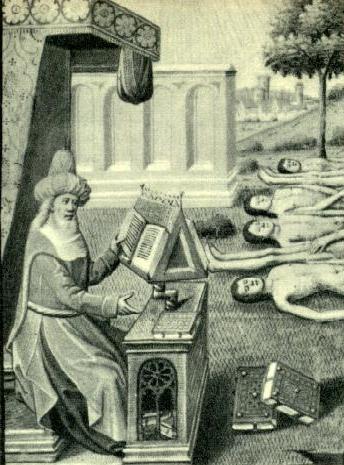 It involves a person ceasing to cling to her ordinary life; old ideas and feelings lose all value for her. The whole course of her experience takes on a new meaning and leads in a totally different direction. She DIES completely to her old way of being and becomes–literally–a new person as she experiences re-birth.
It involves a person ceasing to cling to her ordinary life; old ideas and feelings lose all value for her. The whole course of her experience takes on a new meaning and leads in a totally different direction. She DIES completely to her old way of being and becomes–literally–a new person as she experiences re-birth.
The esoteric re-birth experience could produce the right effect upon the neophyte’s soul only if she had previously changed her lower world of experience and consciousness. If she were to be inducted into the Life of the Spirit where she would behold a Higher World, this required a prior total, radical transformation in her way of thinking, feeling, acting–being in general.
For most people, the empirical world of shoes and ships and sealing wax is the only one; any idea of a higher world is simply a fantasy. Such musings are “mere” thoughts and ideas. They have no reality. We can’t touch them or hear or see them. They’re not “real.”
“Now of the process of re-birth there is and always has been a definite and exact science, the knowledge of which has been the property of the smallest of minorities and, for adequate reasons, has not been suffered to be promulgated to the multitude, although individuals who earnestly sought for it never failed in discovering it. The Mystery-schools of antiquity, at least before the days of their degeneracy, possessed and administered it; it was the raison d’etre of their existence, as was well known to the public 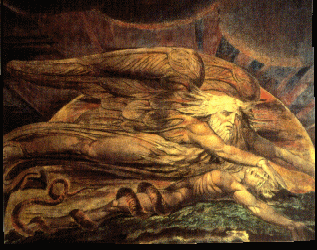 of the time, any member of whom, prepared to abandon secular life and apply himself to the higher vocation, could seek admission therein. The Christianity of the first two centuries took over the doctrine and the science, confirmed and expanded as they became by the advent of Christ, but eventually lost them and put in their place the ecclesiastical machinery and dogmatic theology which have ruled throughout the subsequent centuries of European history, with the result that popular Christianity has for long known nothing of them. With the enjoinder of the assured necessity for regeneration proclaimed by the Master of their faith it and its theologians and pastors are well familiar. But can it be said that ‘Ye must be born again’ means for them more than a vague, mysterious, metaphoric counsel of perfection capable of being satisfied by living the ordinary natural life as far as possible in accordance with the standard of conduct indicated in the Gospels? Are the words accorded more than a value for ethical purposes, to the total neglect of the possibility of their literal practical fulfilment?”
of the time, any member of whom, prepared to abandon secular life and apply himself to the higher vocation, could seek admission therein. The Christianity of the first two centuries took over the doctrine and the science, confirmed and expanded as they became by the advent of Christ, but eventually lost them and put in their place the ecclesiastical machinery and dogmatic theology which have ruled throughout the subsequent centuries of European history, with the result that popular Christianity has for long known nothing of them. With the enjoinder of the assured necessity for regeneration proclaimed by the Master of their faith it and its theologians and pastors are well familiar. But can it be said that ‘Ye must be born again’ means for them more than a vague, mysterious, metaphoric counsel of perfection capable of being satisfied by living the ordinary natural life as far as possible in accordance with the standard of conduct indicated in the Gospels? Are the words accorded more than a value for ethical purposes, to the total neglect of the possibility of their literal practical fulfilment?”
Somehow another idea has to come to us, a message by a person who knows of a Higher World. She explains that a totally different relationship to reality is possible–if one changes his entire way of thinking and acting. A person who clings at all costs to the ordinary conception of reality can’t grasp such ideas; he won’t even be interested in hearing about them. In regard to such people, Perennialist teachers such as Jesus explain that they have ears to hear but will not hear and eyes to see but will not see. So initiation into the re-birth experience is not provided to them because it would be wasted, ignored, or misused.
 But some people do want to hear about such ideas; there is a kind of divine discontent in them. They want to understand their lives in a more comprehensive way. And they’re capable of making the radical transformation in their being which is required for this strange new experience of death to the old life and re-birth to a new one. Their whole awareness of reality makes a complete shift.
But some people do want to hear about such ideas; there is a kind of divine discontent in them. They want to understand their lives in a more comprehensive way. And they’re capable of making the radical transformation in their being which is required for this strange new experience of death to the old life and re-birth to a new one. Their whole awareness of reality makes a complete shift.
“The Truth is yourself, but not your mere bodily self,
Your real self is higher than ‘you’ and ‘me.’
This visible ‘you’ which you fancy to be yourself
Is limited in place, the real ‘you’ is not limited.
Why, O pearl, linger you trembling in your shell?
Esteem not yourself mere sugar-cane, but real sugar.
This outward ‘you’ is foreign to your real ‘you;’
Cling to your real self, quit this dual self.”
Initiation Into the Higher Mysteries
The writings of such early Christian teachers as Paul, Clement of Alexandria, Origen, and Valentinus, provide unquestionable proof that there was an esoteric strain in Jesus’ teachings. Further, they show that only certain persons were judged to be eligible for initiation into the Higher Mysteries–what Paul called resurrection into the body of Christ.
The division of Christian teachings into exoteric–public–and esoteric–secret–was understood by genuine Christian teachers to be the same as in other religious and philosophic systems. This is made particularly clear in Origen’s book Origen Against Celsus.
“That there should be certain doctrines, not made known to the multitude, which are [revealed] after the exoteric ones have been taught, is not a peculiarity of Christianity alone, but also of philosophic systems, in which certain truths are exoteric and others esoteric. Some of the hearers of Pythagoras were content with his ipse dixit; while others were taught in secret those doctrines which were not deemed fit to be communicated to profane and insufficiently prepared ears. Moreover, all the Mysteries that are celebrated everywhere throughout Greece and barbarous countries, although held in secret, have no discredit thrown upon them, so that it is in vain he [Celsus] endeavours to calumniate the secret doctrines of Christianity, seeing that he does not correctly understand its nature.”
The esoteric teachings given by Jesus to selected initiates were not written down, but were taught orally to those deemed worthy to receive them, to aspirants who formed small communities which remained in touch with the central body.
The exoteric (public) teachings were considered to be effective and applicable to ordinary members of the Christian faith. The rank of initiate was achieved only by those who not only lived an exemplary life but also studied all branches of human knowledge. The initiate was to be a philosopher–a seeker of wisdom–in Plato’s terms.
“Some who think themselves naturally gifted, do not wish to touch either philosophy or logic; nay more, they do not wish to learn natural science. They demand bare faith alone. . . So also I call him truly learned who brings everything to bear on the truth — so that, from geometry, and music, and grammar, and philosophy itself, culling what is useful, he guards the faith against assault. How necessary is it for him who desires to be partaker of the power of God, to treat of intellectual subjects by philosophising.”
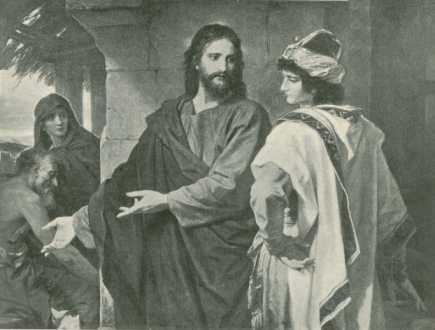 The initiate must be tested to see if his interest in the Higher World is genuine or not. It is possible for a person, hearing these ideas, to allow himself to be flung into a sense of emptiness, of nothingness. This is why the teachings are reserved only for those capable of the rigors of the spiritual life. Otherwise they would be deprived of what gives them happiness, makes them feel secure, without receiving anything in exchange.
The initiate must be tested to see if his interest in the Higher World is genuine or not. It is possible for a person, hearing these ideas, to allow himself to be flung into a sense of emptiness, of nothingness. This is why the teachings are reserved only for those capable of the rigors of the spiritual life. Otherwise they would be deprived of what gives them happiness, makes them feel secure, without receiving anything in exchange.
This is why it is absolutely essential that a person change his entire way of thinking and acting prior to being initiated into the deeper mysteries of death and re-birth. The attitude with which we approach a teaching determines completely what we receive and understand.
“Let a divine being approach you! It may be nothing or everything. Nothing, if you meet it in the frame of mind in which you confront everyday things. Everything, if you are prepared and attuned to it. What it is in itself is a matter which does not concern you; the point is whether it leaves you as you were or makes a different man of you. But this depends solely on you. You must have been prepared by the education and development of the most intimate forces of your personality so that what the divine is able to evoke may be kindled and released in you. What is brought to you depends upon the reception you prepare for it.”
By definition, what occurs in the initiation process is known only by those who have experienced it and must remain hidden to all others. In an essay such as this we can discuss only the general features of this initiation procedure; the actual process takes place exclusively with a teacher and a thoroughly tested initiate.
“The secrecy surrounding the science has been due to the mental and moral unpreparedness for it on the part of those content to live the normal life of the world. Save under glyph and figure, cryptic memorials and allegories, the details of the experimental process of regeneration could never be made public, nor can they now. . . And why? Because, apart from the privacy inevitably attaching to sacrosanctities, it involves perils personal and general; it lays open the most secret recesses and properties of the human organism, stripping bare the quivering roots of the physical and psychic life; it leads into contact with magnetic forces of terrific potency from the knowledge and effects of which we are at present providentially sheltered and safeguarded by the grossness of our sense-bodies and the limitations those impose upon us until such time as we become fitted to function in independence of them.”
The rite of initiation within Esoteric Christianity consisted in a definite procedure involving informing the aspirant of certain “mysteries” and inducing in him a higher state of consciousness.
Origen speaks of this procedure as “initiating those who were already purified into the sacred Mysteries.”
“To those who have been purified in heart: He, whose soul has, for a long time, been conscious of no evil, especially since he yielded himself to the healing of the Word, let such a one hear the doctrines which were spoken in private by Jesus to His genuine disciples.”
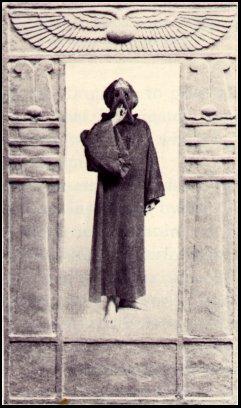
Only a small minority of adepts possess operational knowledge of the science of spiritual regeneration.10 In the initiation process, a knowledgeable, skilled operator psychically induces a heightened state of consciousness in the aspirant. The initiate’s higher consciousness is activated so that it can function in a necessarily quickened manner. The aspirant is placed in the psychic condition of a person at the moment of death, his consciousness withdrawn from externals, restricted to and focused upon his mind’s internal content, which he is directed to explore and contemplate.
From several extraordinary sources, it appears that Jesus practiced a secret spiritual “baptism” with specially chosen aspirants. In the Gospel of Mark (chapter 14) we come upon a strange passage describing what happened in the garden of Gethsemene as Jesus was praying and then arrested by the Jewish scribes and elders.
“Then all the disciples deserted Jesus and made their escape. There happened to be a young man among Jesus’ followers who wore nothing but a linen shroud about his body. They seized him, but he left the shroud in their hands and took to his heels stark naked.”
 In trying to make sense of this strange statement, we must go to the researches of a biblical scholar named Morton Smith. In 1958 Smith, then a graduate student in Theology at Columbia University, was invited to catalogue the manuscript holdings in the library of the Mar Saba monastery, located twelve miles south of Jerusalem. Smith discovered a copy of a letter written by Clement of Alexandria. In the letter Clement mentions not the familiar canonical Gospel of Mark, but a different, secret gospel that Mark had written in Alexandria. Clement said that after Peter’s death, Mark had brought his original gospel to Alexandria and had written a “more spiritual gospel for the use of those who were being perfected.” Clement says this text was kept by the Alexandrian church for use only in the initiation into “the great mysteries” as it would “lead the hearers into the innermost sanctuary of that truth hidden.”
In trying to make sense of this strange statement, we must go to the researches of a biblical scholar named Morton Smith. In 1958 Smith, then a graduate student in Theology at Columbia University, was invited to catalogue the manuscript holdings in the library of the Mar Saba monastery, located twelve miles south of Jerusalem. Smith discovered a copy of a letter written by Clement of Alexandria. In the letter Clement mentions not the familiar canonical Gospel of Mark, but a different, secret gospel that Mark had written in Alexandria. Clement said that after Peter’s death, Mark had brought his original gospel to Alexandria and had written a “more spiritual gospel for the use of those who were being perfected.” Clement says this text was kept by the Alexandrian church for use only in the initiation into “the great mysteries” as it would “lead the hearers into the innermost sanctuary of that truth hidden.”
Morton Smith spent a decade examining this Secret Gospel of Mark and finally came to this conclusion concerning the special rite of psychic immersion into a new realm of being:
“Jesus could admit his followers to the kingdom of God, and he could do it in some special way, so that they were not there merely by anticipation, nor by virtue of belief and obedience, nor by some other figure of speech, but were really, actually, in.”
Clement quotes from the Secret Gospel of Mark the tale of a young man who, like Lazarus, was raised from the dead by Jesus and who later came to Jesus “wearing a linen shroud over his naked body.” Clement quotes the Secret Gospel of Mark as stating that Jesus spent the whole night teaching the young man “the mystery of the kingdom of God.”
What we have, then, is a clear indication that Jesus–and his authentic followers–practiced a baptismal initiation rite in which they “immersed” aspirants into a new realm (kingdom) of Higher Consciousness. Through initiation, neophytes came into contact with an inner awareness of a Higher World–their Real Self.
The images which arose in the spiritual life of their soul became increasingly real to them. They began to understand that what their senses see, hear, and touch is of a lower, impermanent order of reality. They knew they couldn’t prove what they felt; they could only tell others about what they had experienced. They realized that in recounting their experiences to others they were like a person speaking of perceptions of a world to which most others are blind.
Think of how it is to have a conversation with an embryo.
You might say, “The world outside is vast and intricate.
There are wheatfields and mountain passes,
and orchards in bloom.
At night there are millions of galaxies, and in sunlight
the beauty of friends dancing at a wedding.”
You ask the embryo why he, or she, stays cooped up
in the dark with eyes closed.……………………………Listen to the answer.
There is no “other world,”
I only know what I’ve experienced.
You must be hallucinating.”Jalaluddin Rumi
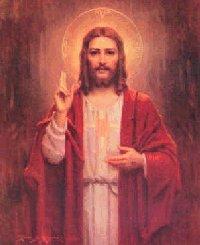 It is only after experiencing entry into the search for the unitive state that one can begin to discern the authentic parts of the New Testament and other genuine spiritual literature. It makes it possible to discriminate between what is real and what is concocted. Only that which speaks to a dying to self and re-birth to a Higher Consciousness is understood to be genuine.
It is only after experiencing entry into the search for the unitive state that one can begin to discern the authentic parts of the New Testament and other genuine spiritual literature. It makes it possible to discriminate between what is real and what is concocted. Only that which speaks to a dying to self and re-birth to a Higher Consciousness is understood to be genuine.
The person initiated begins to experience a force kindled within him, his true spirit. A new being has entered him and become active in his life. Forces slumbering within are awakened; he begins to experience inspiration from a Higher Source and feels the necessity to act in such a manner that he can share in the life of others. Spiritual transformation–re-birth–has occured, bringing about a change in that part of him that is open to “intuition,” the voice of “the teacher within.”
The Perennial Tradition is alive and well in all its embodiments–Esoteric Christianity as well as others. The esoteric teachings and practices which were used by Jesus and his authentic followers are still being practiced today–but by contemporary Perennialist teachers in ways which are not easily recognized by those “who have eyes to see but do not see.”
“Seek annihilation and adore change of state.
You have already seen hundreds of resurrections
Occur every moment from your origin till now;
One from the inorganic state to the vegetive state,
From the vegetive state to the animal state of trial;
Thence again to rationality and good discernment;
Again you will rise from this world of sense and form.”
Notes
1 John 3:3, J. B. Phillips translation
2 See Chapter 13 in The Perennial Tradition, “Jesus As a Perennialist
Teacher.”
3 The word translated as “church” in the New Testament is
![]() ekklesia, meaning an assembly called together
ekklesia, meaning an assembly called together
(from the Greek ekkalein: to call forth).
4 Adolf von Harnack, Marcion: the Gospel of the Alien God, p. 22
5 The koine Greek term for gospel is euangelion, the proclaiming of good tidings. Koine (common) Greek is the language in which most of the early Christian materials were written. In some parts of this article I am using my own translation from the koine Greek original.
6 Horace H. Bradley lists 538 writings that refer to early Christianity in his book Fragments of the New Testament.
A treasury of Gnostic scrolls was unearthed in 1945 at Nag Hammadi in Egypt. These documents had been concealed in the late fourth century, most likely by someone who felt (reasonably enough) that unless concealed the texts would be destroyed by heresy-hunting true believers. The best-known text from the Nag Hammadi treasure trove was the Gospel of Thomas. The Dead Sea Scrolls were discovered in Palestine two years later and have been the target for squabbling among biblical scholars ever since.
7 “‘The mystical beliefs’ of the secret societies were, and indeed are, based on the Hermetic maxim ‘As above – so below’ which teaches that the natural world is a material reflection of the spiritual. It forms the esoteric basis for the Ancient Egyptian Mysteries, Gnosticism, Esoteric Christianity, the Cabbala, the Hermetic tradition, alchemy and societies such as the Templars, Freemasons and Rosicrucians.”
Michael Howard, Occult Conspiracy
8 See Chapter 1 in The Perennial Tradition, “The Perennial Tradition”
9 The Latin-based word “repent” means: to feel remorse, contrition, or self-reproach for what one has done or failed to do. It’s clear why such a word would be used in an autocratic system such as the Roman Catholic Church where penitents (as members are called) are forced to repent by confessing their sins to a priest. The priest thus becomes a necessary mediator between God and the Christian penitent.
10 See Chapter 21 in The Perennial Tradition, “Regeneration Into a Higher Consciousness”
by
